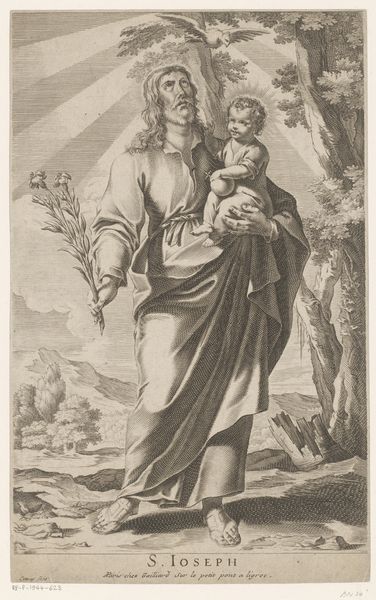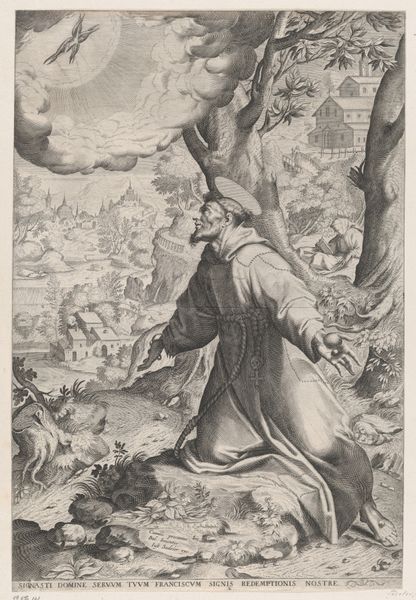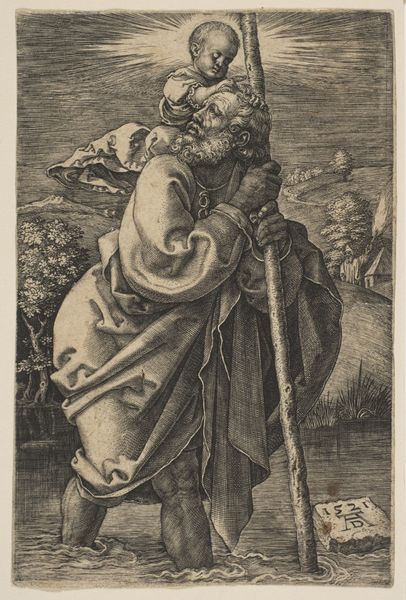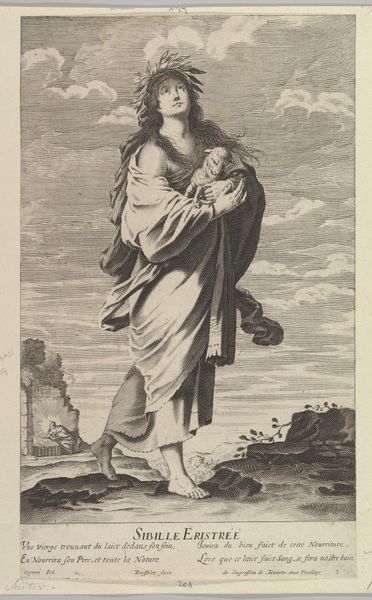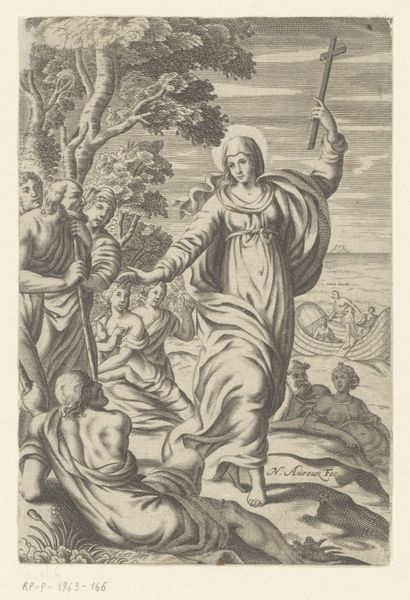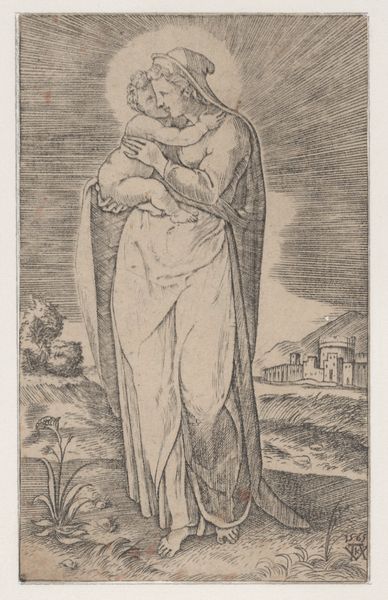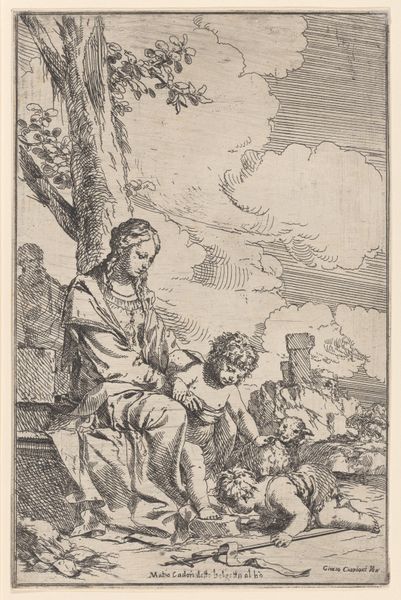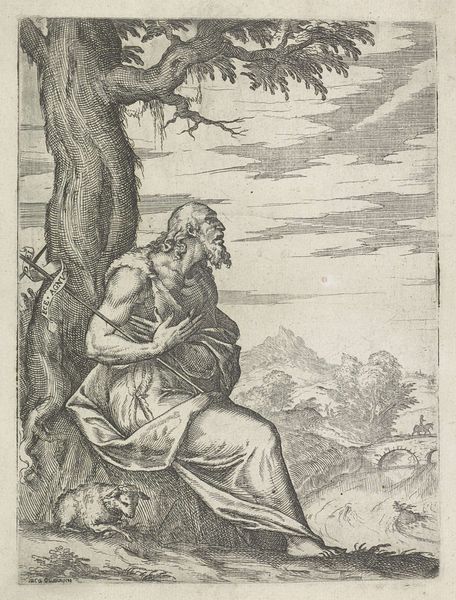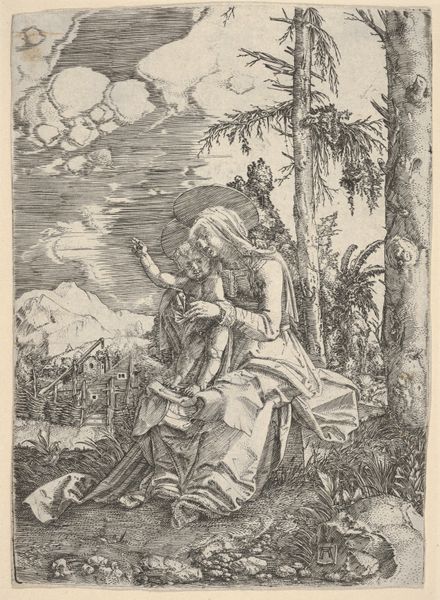
drawing, print, engraving
#
drawing
# print
#
landscape
#
figuration
#
history-painting
#
italian-renaissance
#
engraving
Dimensions: 6 5/8 x 5 1/16 in. (16.8 x 12.9 cm)
Copyright: Public Domain
Curator: This engraving from 1516 is called "The Cumaean Sibyl," and it’s attributed to Agostino Veneziano. Look at the incredible detail captured through line work alone. What are your initial thoughts? Editor: There's an odd stillness to it. Even the light seems frozen. I am drawn to the subject carrying some kind of basket filled with baby-like forms while she is followed by a dog with an almost grotesque face. Curator: It's fascinating how the printmaking process impacts our interpretation. Consider the artist's labour to transfer an image onto the plate and the work involved in creating editions that circulate widely. The means of distribution affect the work's availability and, consequently, its potential influence on society. Editor: That's true; it allows the dissemination of imagery across various social classes. The Sibyl herself is quite a figure. In Greco-Roman lore, she served as a prophetess of Apollo, living in a cave near Cumae, and a long-lived advisor offering counsel to figures like Aeneas on how to find the underworld. Seeing her in a seemingly commonplace Renaissance Italian landscape offers an interesting lens. Curator: Do you think the placement diminishes her reputation? It feels like there’s a connection being made between sacred female roles and traditional work, even the very physical aspects of existence are given focus in the print work itself. Editor: Maybe. This image invites reflections on knowledge, prophecy, and the institutional framework through which women's wisdom was delivered and, in many ways, constrained. Curator: You raise some excellent points. The medium certainly shapes how these socio-political roles are disseminated. Editor: Exactly. Ultimately, this Sibyl, caught between the mundane and the mythical, continues to resonate today, urging viewers to think critically about both the history and the manufacturing that produce her enduring appeal. Curator: Precisely, understanding the nuances between materials and institutional support enrich how we engage with such historically charged pieces.
Comments
No comments
Be the first to comment and join the conversation on the ultimate creative platform.

